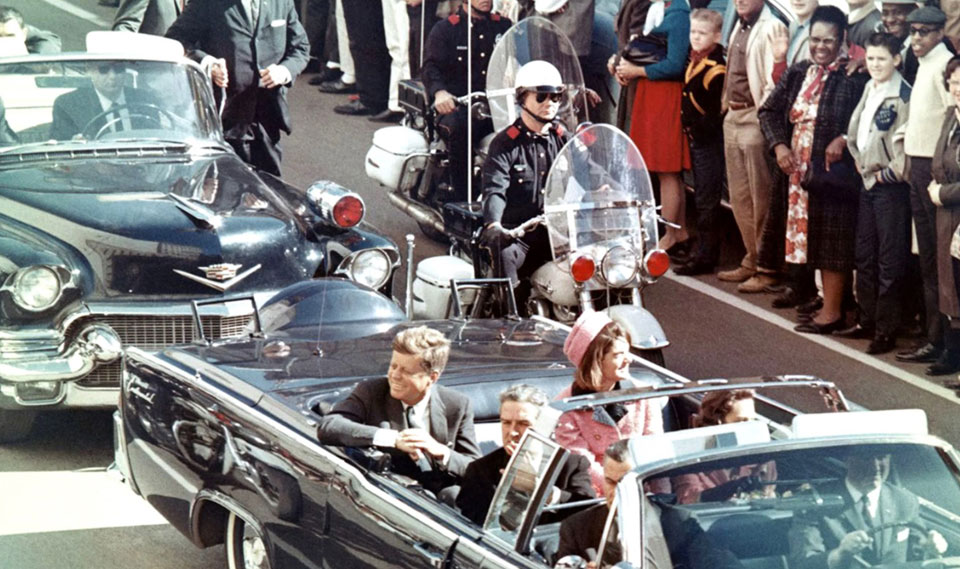
CANNES, France — Another Cannes Film Festival is in the books, and this one, which Variety labeled “Red Carpet Done Right” and The Hollywood Reporter hoped would “kick off a global comeback” for the film industry in a return to a “New Normal,” instead was beset with all the contemporary contradictions as the global crisis outran the global comeback.
First prize, the Palme d’Or, went to Titane, a film loaded with treachery, genderbending decadence, and automobile fetish, Black Swan meets Fast and Furious. Jury president Spike Lee let the cat out of the bag inadvertently announcing the winner at the beginning of the awards ceremony but that was the least of the problems, in particular for the French film industry.
This edition of a festival essentially ruled by the French theater owners, who three years ago threatened to fire festival director Thierry Frémaux if he ever again allowed a streaming service entry in the main competition, was all about promotion of French film as many of the filmmakers elected to delay the release of their films one year to take advantage of the Cannes promotional lift. The Americans, on the other hand, used the lockdown to either launch or strengthen their digital streaming services and to condition global audiences for streaming releases of films.
For the French industry, the COVID catastrophe intervened as the French President Emmanuel Macron announced midway through the festival that because of the rapidly increasing cases due to the Delta strain and the resistance to vaccination, on the Wednesday after the festival ends, the prime day for these films to make a splash in theaters, everyone attending the cinema must produce the QR code showing two shots of the vaccine plus two weeks, and no cinema hall could house more than 50 spectators. To add insult to injury, he also gave restaurants, cafés, and nightclubs an additional two weeks before these new restrictions apply.
The India Delta strain now plaguing France is a result of the greed of Western Big Pharma and supposed do-gooders like the G7 group of neocolonial powers which failed to push for patent sharing and a global vaccination. Scientists are also coming to a consensus that climate change plays a huge part in the spreading of COVID and similar pandemics because, as animal habitats shrink due to global warming and humans live closer to animals, the likelihood of deadly viruses jumping from one species to another increases. So, the Cannes “new normal” was disrupted by the corporate forces the festival nominally stands above in its validation of art over commerce.
In a special climate section, French director Cyril Dion’s Animal did raise this point. The film is an elegantly photographed tour of the planetary destruction caused by climate change as its two teens join in a “picking-up-plastic” campaign on the beaches of Mumbai, observe shrinking nature in the wild in Kenya, and visit an island where foxes, killed by golden eagles who have migrated there in search of food stricken from their habitat, are being brought back to their natural place in the ecosystem. Dion is well aware of the stakes and stated in a festival press conference that if individual initiative, which the film validates, were completely successful, this would only eliminate 24% of greenhouse gases. The film does partake of neoliberal reform as, on a rabbit farm, the two are told that here rabbits in tight cages are raised humanely. Only at the end of the visit do they bring up that this humane treatment is only to later slaughter the animals. The Franco-Indian boy is quite curious and natural while the Brit girl, Bella Lack, often preens to the camera in a way that suggests she may use global warming as a stepping-stone to media stardom.
The corporate media have their own brand of wealth-washing evidenced in Deadline’s profile of the French actress Léa Seydoux who appeared in four films in the festival, including Wes Anderson’s The French Dispatch, a nostalgic look at a newspaper and journalism itself in a small French town in the last century which is now everywhere disappearing in France as well as in the U.S. The French audience aware of these changes gave the film a nine-minute standing ovation at its screening. Seydoux was a formidable presence first in the French cinema and now globally, but the magazine was at pains to point out that her initial breakthrough in the industry could not have had anything to do with her grandfather being the head of Pathé and her granduncle being the head of Gaumont, still the two leading studios in the French cinema industry.
The immigrant question was on the minds of global filmmakers as two films, the possible Oscar contender Blue Bayou and Europa, dealt in variously effective ways with the harsh treatment of those not born in the U.S. and Europe. Blue Bayou, written, directed, and starring Justin Chon, revolves around a Korean-American outside Baton Rouge being threatened with deportation. The film is a prime example of the “Immigrant Melodrama” where the former victim position of the woman in the Hollywood melodramas of the ’40s and ’50s is now occupied by the immigrant, be they male or female. The film tugs at your heartstrings, somewhat effectively, but heavily overloads the conclusion, as a Bodyguard-type airport scene just doesn’t, or won’t, end. Most effective in the film is Alicia Vikander, who plays the deportee’s wife, rendering an unbelievably touching, heartfelt but not overdrawn, version of Linda Ronstadt’s phrasing of Roy Orbison’s “Blue Bayou.” Europa, on the other hand, is a Dardenne Brothers in-close framing of an Iraqi immigrant’s entry into Fortress Europa by way of Bulgaria. In shots where we hardly see anything else but him—call it the Paul Greengrass Flight 93 version of events—he is variously beaten and abused. The film is ultimately far less effective for its refusal to supply any context to the immigrant’s plight.
Protests were much in evidence as on the disingenuous side, the festival’s directors sneaked in, after the Chinese film screenings so they could not be withdrawn in protest, Revolution of Our Times, a propaganda documentary validating the often violent student protests backed by Western capitalists and governments as a toehold in the developing New Cold War against a China which has dared challenge those powers for economic parity.

On the side of genuine protest was Amparo, a touching fiction set in the Colombian city of Medellín in the 1990s about a mother’s journey and humiliation as she attempts to free her son who has been shanghaied into the Colombian army to be sent to the most dangerous war zone. The director Simón Mesa Soto explained that, with the Duque government continuing to wage war against the guerrilla movement the FARC, which like the majority of Colombians now wants peace, the situation detailed in his film is, 30 years later, still a reality, as each day protestors in Medellín are being shot by the U.S.-backed government.
Oliver Stone marked another 30-year anniversary in his JFK Revisited: Through the Looking Glass, a documentary sequel to JFK which incorporated additional evidence now unredacted from the Warren Commission and House of Representatives reports giving increased credence to the film’s thesis that JFK was assassinated not by a lone gunman but most likely by CIA and ex-CIA members which after Kennedy’s failure to back the Bay of Pigs Cuba invasion then launched their ultimate dirty tricks operation. Stone described this new research, including Kennedy scholars claiming that Kennedy was actively engaged in a global peace movement and in withdrawing the U.S. from Vietnam, as converting “conspiracy theory” into “conspiracy fact.”
Whoopi Goldberg and Stone narrate the first part of the film, and Stone then inserts the clip from JFK where Donald Sutherland as a deep cover “Colonel X” asks who had the motive for killing Kennedy, beginning to point toward the intelligence agency. Sutherland then narrates the second, more involving part of the film which details the CIA’s dissatisfaction toward Kennedy who, having visited Vietnam as the French were losing the country and having seen the U.S. as facing a similar fate, wanted peace as well as a de facto understanding with the just-completed revolution in Algeria, the left-leaning Sukarno in Indonesia, and Egypt’s Nasser, the pan-Arab proponent who was said to have wept for an entire night upon hearing of Kennedy’s death. The film also relates the French President de Gaulle’s confronting Kennedy with his suspicion that the U.S. backed the plot to assassinate him by a right-wing cabal of his generals. To which Kennedy is said to have replied that there are parts of the government he had no control over. Sutherland’s narration of these findings, then, because of the previous clip from Stone’s earlier film, is invested with the fictional authority of Colonel X rather than simply the actor’s voice. A remarkable blending of fact and fiction.

Finally, there was Ukrainian director Sergei Loznitsa’s Babi Yar. Context, an astute assembly of footage from German and Russian archives that tells the story of the Nazi invasion of Ukraine and most particularly of the murder of over 33,000 Jews and the burying of their bodies in the Babi Yar ravine outside Kiev. In 1944 as the Russians approached, the Nazis ordered Ukrainians, whom they later shot, to dig up the bodies and burn them to hide the evidence of their crimes. This evidence emerges in the Soviet “Nuremberg Trials” held two years before those in the West which contained testimony by a Ukrainian who miraculously survived and an SS machine gunner who participated in the slaughter.
Stalin never acknowledged that the 33,000 were Jews, referring to them only as Soviet Ukrainian citizens, while later color footage shows industrial waste being pumped into the ravine at the order of the local town council, with the Ukrainians themselves further erasing traces of the atrocity. Loznitsa has a very anti-Soviet bent and he does parallel cut first the Ukrainians putting up Hitler posters and then, after the Red Army sweeps through, equally papering Stalin posters. The footage, though, also shows the right-wing fascist element who welcomed the Nazis as a parade of separated men and women in traditional Ukrainian peasant outfits gleefully brandish swastikas.
Such fascinating confronting of brutal realities was often glossed over in this edition of the festival.










